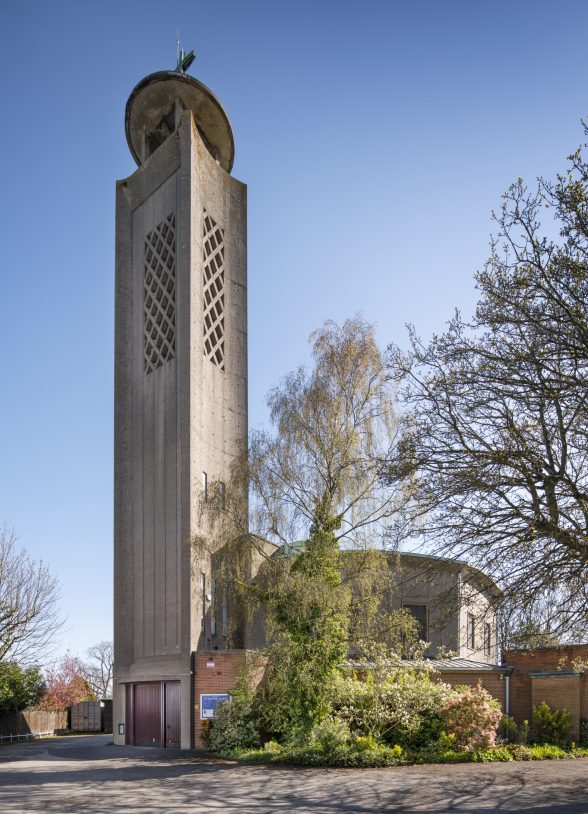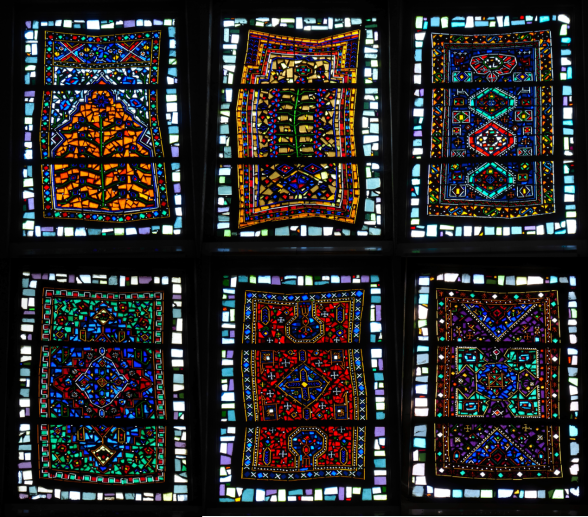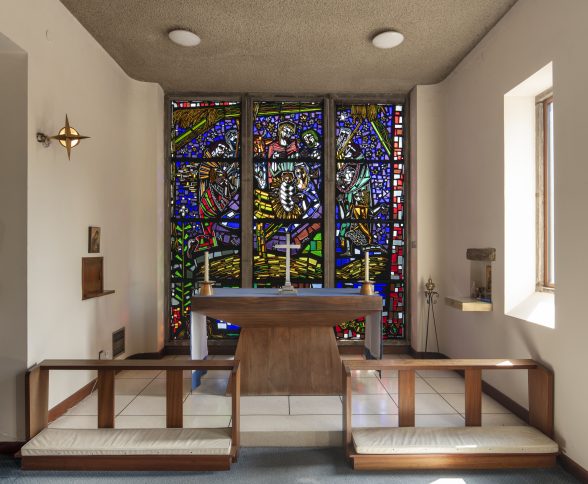This website uses cookies
This website uses cookies to enable it to function properly and to analyse how the website is used. Please click 'Close' to accept and continue using the website.



Image: Historic England
The Church of St Peter in Hall Green, Birmingham (1961-64), has been Grade II listed following support from C20 Society. The church contains exquisite dalle de verre stained glass windows by French artist Tristan Ruhlmann, his only known work in the UK.
The building of the Church of St Peter started in the spring of 1961 with the construction experiencing a number of delays; it was eventually completed in 1964. Its octagonal drum-shape was built with reinforced concrete to imaginative designs by Norman T Rider, with six of the drum’s eight concrete elevations containing a pair of windows by Ruhlmann.
The single-span 28m by 23m domed roof of the drum and the north-east vestry are topped with copper, while the strikingly tall west tower acts as a beacon to the local community. This tower is topped with a circular concrete roof supported by four columns, and surmounted by a copper cross. The square shaft of the tower has concave elevations with concrete criss-cross belfry windows. Three tall slim lights are situated on the first floor of the north and south elevations, with a further two lights above.

Image: Historic England
Dalle de verre
The dalle de verre technique of setting thick ‘stones’ of glass into concrete or epoxy resin was developed in France in the 1930s and was first brought to Britain by Pierre Fourmaintraux in the 1950s. While there are a few examples of Roman Catholic churches commissioning French dalle de verre practitioners, the Anglican commission of Ruhlmann at the Church of St Peter appears to be very unusual.
Tristan Ruhlmann was the son of the notable glassmaker, Marcel Ruhlmann who worked primarily in Alsace and across the border in Germany. Tristan Ruhlmann continued to work in Alsace throughout his career and his works are found in several churches within the region. Ruhlmann developed the dalle de verre technique by ensuring that the glass was heated and then immediately arranged, ensuring a greater precision and finesse to his work. Designs by Ruhlmann for the Church of St Peter were subsequently approved with potentially heavy import taxes for the windows waived after the involvement of the local Member of Parliament, Aubrey Jones. The commissioned windows included an east window depicting a scene from the gospel of St John, described at the time as the ‘finest window in the Midlands’.
Particularly unusual are the twelve striking decorative clerestory ‘carpet’ window designs. Depicting Middle Eastern prayer-mats which would have traditionally hung in open windows of early Christian churches, the wavy edges of the mats suggest movement in the wind and are a rare representation of prayer in a multi-cultural idiom.

Image: Aidan McRae Thomson

Image: Historic England

Become a C20 member today and help save our modern design heritage.